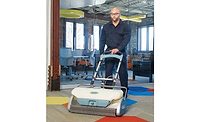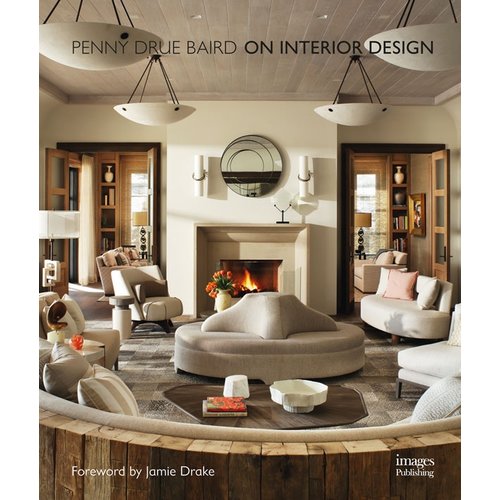With a new administration in place and COVID-19 vaccines being distributed, LVT manufacturers in particular are looking ahead to the rest of the year with optimism as the flooring business rebounds. LVT continues to gain market share, as enhanced performance features and an array of design options make it the preferred choice for commercial spaces.
LVT can be found in almost any interior. This is something that flooring professionals believe we will continue to see, because specifiers want a product that is versatile.
“Whether you are looking at carpet tile or sheet goods, there are just segments those products do not work for,” said Whitney LeGate, vice president, commercial LVT, Mannington Commercial. With LVT though, the breadth of application is so large. That’s one reason it’s had such success in the last decade. It just makes sense for so many projects.”
LVT can be found in healthcare, education, and hospitality settings, and because it can be combined with other flooring, it has become the go-to choice for all types of projects. Expect to see more LVT and rubber or LVT and VCT pairings throughout commercial spaces.
“I don’t think we are going to see total soft surface flooring like we did before the pandemic,” said Kelley Bolas, senior product manager, commercial LVT, Tarkett North America. “We’re going to see a lot more LVT and carpet together to create more cleanable spaces incorporating some softness underfoot in key areas.”
The pandemic has been a boon to online retailers, but as people begin to resume their regular leisure activities, experts agree that consumers will be returning to stores for the hands-on experience that is missing when you stare for hours at a computer screen. “We expect hospitality and retail to bounce back strongly because of pent-up consumer demand to travel and shop in person,” explained Gary Keeble, vice president of marketing, Metroflor Corporation.
Lacy Price, U.S. marketing manager for CFL Flooring, agreed, and noted the increased traffic in brick-and-mortar stores will likely lead to more LVT where we shop. “I think there’s going to be a retail surge. People will be shopping in person again because they miss touching the products before they buy them. The use of LVT in retail is picking up, even in smaller segments. If you have a larger store, you can put it in one section. It can be changed out easier, which allows you to be creative with it.”
Such flexibility not only means more choices for layout, but any modifications can also be made quickly. “Commercial environments have little downtime, and should a plank or tile become damaged, it is not only easy to replace by on-site staff, it can also be replaced without pulling up other parts of the floor,” noted Jenne Ross, director of marketing for Karndean Designflooring.
There has been an emphasis on easy-to-clean flooring because of the pandemic, but scratch resistance is a strong selling point with LVT specifiers. “Coatings are certainly beneficial to the durability and scratch resistance of the product,” said Barron Frith, president of CFL North America. “Scratch protection has always been a priority in the LVT business. And I think it will continue to be a priority going forward.”
Indeed, in busy commercial environments, superior scratch resistance is essential, so coatings are continually being refined. “Because of advancements in coating technologies, many LVT products do not require polish, and can retain a like-new appearance with regular low-maintenance procedures,” said Amanda O’Neil, director, commercial product management at Armstrong Flooring. “End-users and owners are opting for LVT, considering the significantly lower cost of ownership over time versus a standard tile or sheet product.”
“Designers are considering how to put in wayfinding that feels natural, and is part of the design.”
– Whitney LeGate
Flooring will help users navigate reconfigured offices when we return to work. “We are actually seeing wayfinding as a big trend in 2021, obviously driven by COVID-19,” LeGate noted. “We’ve all had to reorient how we interact in these spaces that we were otherwise familiar with. Now, designers are considering how to put in wayfinding that feels natural, and is part of the design.”
Strategic placement of LVT can also aid in traffic flow, and ensure that people keep a comfortable distance from one another. “Our flexible LVT planks and tiles are multidirectional, allowing them to be laid in a variety of patterns and pathways that facilitate the flow of foot traffic throughout a space,” Ross added. “In post-COVID design, this also allows for the incorporation of social distancing through flooring.”
LVT not only boasts strong performance, but the full spectrum of styles and hues. “With LVT there are so many design choices,” said Leigh Wright, director of product development, LVT, Tarkett North America. “You can have a product that looks like a natural material, like a wood grain or stone. And then there is LVT that is more abstract, in a rainbow of colors.
LeGate said non-representational looks will continue to gain ground, precisely because they are not trying to mimic anything. “For the last two years, we have really pushed forward with the abstracts. People want something that isn’t trying to do or be something else. An abstract stands on its own.”
While patterns may be a bit bolder, colors have toned down, taking their cues from an unblemished landscape. “Softer colors are being used. Because of the pandemic, there’s not as much pollution in certain places,” Wright noted. “And all of a sudden, we can see what the true color of the water is. We want those same natural colors. We’re ready for calmness.”
COVID-19 has prompted an interest in goods that are produced domestically, flooring included. “Over 90% of our commercial LVT line is made in the United States by us in our Madison, Georgia, facility, which we’re extremely proud of,” LeGate noted. Tarkett North America manufactures some of its LVT in Florence, Alabama, and CFL Flooring is set to open a facility in Calhoun, Georgia, expected to be up and running by mid-year.
As the new U.S. administration begins the monumental task of governance, we have to wait and see if and when tariffs rise. LeGate notes that resin prices both at home and abroad have increased in the last few months, but she doesn’t expect that the price of LVT will soar. “I don’t think we’re going to see tariffs go up. If we see increases, it is going to be because of raw material supply.”
Learn more about the latest trends in commercial flooring
It seems that LVT has finally lost its stigma as unappealing flooring—due in large part to advances in printing. “We’ve invested in our digital printing capabilities, and I think that plays into the whole idea of natural and authentic,” Wright said. “I think that LVT is headed in that direction. It is so much more accepted.”












